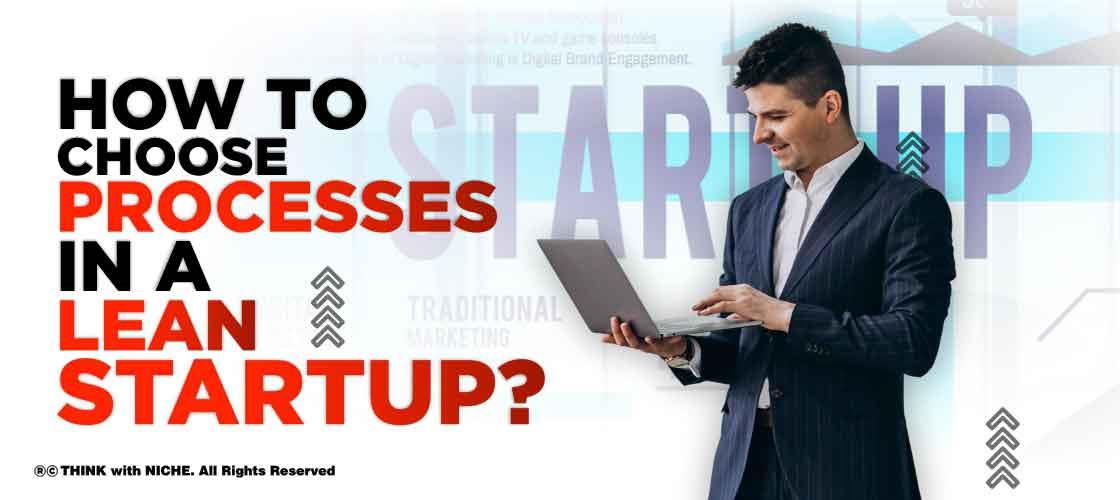How lean-startup is the Game-Changer

Blog Post
Customer-related data, such as customer churn rate, lifetime customer value, and product popularity, are extensively emphasized in lean startup methodologies. Experimentation is valued more than sticking to a strict plan in lean startup procedures. Validated learning, a mechanism through which organizations measure consumer interest, is used by the lean startup. #TWN
Establishing a new firm, whether it's a tech start-up, a small business, or a corporate venture, has always been a hit-or-miss proposition. According to the decades-old formula, you prepare a business strategy, pitch it to investors, build a team, unveil a product, and begin selling as hard as you can. And you'll almost certainly encounter a fatal setback along the way. However, a powerful countervailing factor has recently emerged, one that has the potential to make the process of forming a business less risky. The "lean start-up" methodology emphasizes experimentation over meticulous preparation, client input over intuition, and iterative design over traditional "big design up front" development. Although the technique is only a few years old, its concepts—such as "minimal viable product" and "pivoting"—have quickly gained traction in the startup industry and business schools have already begun to change their curricula to include them.
However, the lean startup movement hasn't gone mainstream yet, and its full impact has yet to be felt. In many ways, it's similar to where the big data movement was five years ago, consisting primarily of a jargon that isn't generally understood and whose ramifications businesses are only now beginning to appreciate. However, as its methods gain traction, they're reversing the traditional thinking about entrepreneurship. New businesses of all types are seeking to improve their chances of success by adhering to its principles of failing quickly and learning continuously.
I'll give a quick summary of lean start-up strategies and how they've evolved in this essay. Most importantly, I'll show how they could spark a new entrepreneurial economy when combined with other business trends.
The Ideal Business Plan Is a Dream
According to conventional wisdom, the first step for each new business owner should be to write a business plan which is a static document that specifies the magnitude of an opportunity, the problem to be solved, and the solution that the new venture would give. It usually comprises a five-year income, profit, and cash flow forecast. Before an entrepreneur has even begun to construct a product, a business plan is essentially a research exercise completed in solitude at a desk. The assumption is that most of the unknowns of a business can be figured out ahead of time before raising funds and putting the idea into action. When an entrepreneur with a compelling company concept raises funds from investors, he or she develops the product in a similar closed environment. Thousands of man-hours have been invested by developers to get it ready for launch, with little if any user feedback. When the sales force tries to sell the product after it has been built and launched, the enterprise receives significant feedback from customers. And, all too frequently, after months or even years of development, entrepreneurs discover the hard way that most of the product's features aren't needed or desired by customers.
Two Important Ideas Underpin the Lean Startup Methodology
First, rather than spending months preparing and researching, entrepreneurs realize that on day one, all they have are a set of untested hypotheses—basically, educated guesses. Rather than drafting a lengthy business plan, creators use a framework called a business model canvas to describe their hypotheses. It is a diagram that shows how a firm creates value for both itself and its consumers. Second, agile development, which originated in the software sector, is used by lean startups. Customer development and agile development go hand in hand. Agile development reduces wasted time and money by producing the product iteratively and gradually, as opposed to traditional yearly product development cycles that assume awareness of customers' problems and product demands. It's the method via which start-ups develop and test their minimal viable products.
What Makes Lean Startups Unique
A lower rate of startup failure could have significant economic consequences. Disruption, globalization, and regulation are currently buffeting all economies. Established industries are rapidly losing jobs, with many never returning. To generate employment growth in the twenty-first century, new initiatives will be required; therefore, we all have a stake in creating an environment that encourages them to flourish, grow, and hire more workers. It has never been more important to create an innovation economy powered by the rapid growth of startups.
In the past, five factors, in addition to the failure rate, inhibited the growth of new businesses:
1. The high cost of acquiring the first customer, as well as the even higher cost of making a mistake with the product.
2. Long development cycles for technology.
3. The small number of persons who are willing to take on the risks that come with creating or working at a startup.
4. The venture capital industry's structure, in which a limited number of firms each have to spend large sums on a small number of start-ups to have a chance at considerable returns.
5. The concentration of true experience on how to establish start-ups, which was previously only available in small areas on the East and West coasts of the United States. (While this is less of a problem in Europe and other regions of the world, there are regional entrepreneurial hotspots everywhere.)
The lean strategy alleviates the first two constraints by assisting new ventures in launching items that customers truly desire significantly more swiftly and inexpensively than traditional techniques, and the third constraint by lowering the risk of starting a business. It has also developed at a time when other business and technology trends are lowering the obstacles to forming a company. The impact of all of these factors is changing the landscape of entrepreneurship. Another significant trend is the decentralization of financial access. Previously, venture capital was a close-knit group of formal firms based in Silicon Valley, Boston, and New York. New super angel funds, which are smaller than the usual hundred-million-dollar VC fund, can make early-stage investments in today's entrepreneurial ecosystem. Hundreds of accelerators around the world, such as Y Combinator and TechStars, have started to formalize seed financing. Also, crowdsourcing sites like Kickstarter offer a more democratic way to fund start-ups.
Today's innovative ventures benefit from the quick availability of information. Before the internet, fledgling business owners could only get advice from experienced investors or entrepreneurs as often as they could get coffee with them. The most difficult task they face now is sorting through the flood of startup advice they receive. The lean principles provide a framework for distinguishing the good from the bad.
Conclusion
The goal of lean startup approaches was to create rapidly growing technology companies. However, I believe the notions are equally applicable to the creation of Main Street small companies, which account for the majority of the economy. If every small business adopted them, I believe it would boost growth and efficiency, as well as have a direct and immediate impact on GDP and jobs.
How to Choose Processes in a Lean Startup?
You May Like
EDITOR’S CHOICE














